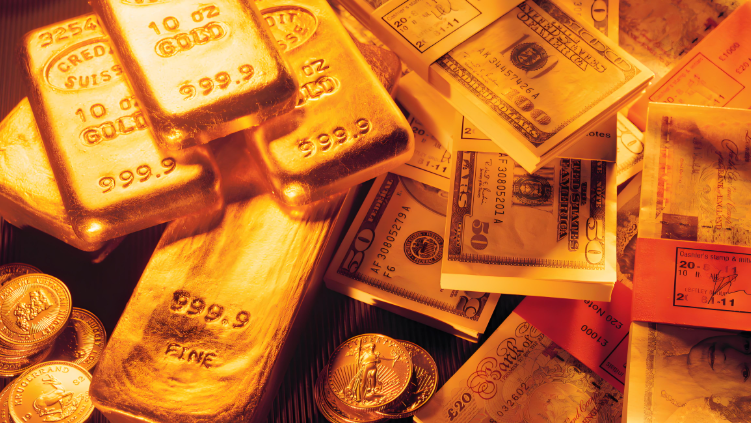Trends in the Precious Metals Market
Advertisements
As we move through 2023,the global economic landscape is increasingly fraught with uncertainty,influencing the behavior of investors across various markets.The emergence of geopolitical conflicts,persistent inflationary pressures,and fluctuating expectations regarding interest rate hikes by the Federal Reserve have created a perfect storm,leading many to seek refuge in traditional safe-haven assets such as precious metals.Gold and silver have emerged as focal points within the precious metals market,attracting heightened attention due to their historical roles as hedges against inflation and economic instability.In this complex and evolving environment,questions arise surrounding the future trajectory of precious metal markets and how investors might best position themselves.
The prevailing sentiment of risk aversion,a response to global market volatility,significantly impacts the precious metals market.Gold,often dubbed the “ultimate safe haven,” tends to draw increased investment during periods of stock market downturns or economic downturns.When fears of recession loom large,investors typically funnel their capital into gold and silver to mitigate potential losses.Over the past few years,this has been particularly evident amid the slow recovery of the global economy and ongoing political instability.As a result,demand for safe-haven assets has surged,propelling the prices of precious metals to new heights.
By the first half of 2023,gold prices had momentarily surpassed $2,000 per ounce,underscoring the robust appetite for safe-haven assets.Data reveals that as expectations of economic recession intensify—especially in response to signs that the Federal Reserve may slow its pace of rate hikes—gold's allure as a protective asset grows stronger.Silver,often viewed as gold's companion,also benefits from risk-averse sentiments,making strides in the market as its industrial applications expand.Not only does silver possess intrinsic anti-inflation qualities,but its industrial demand further elevates its market value.
However,the fluctuation of precious metal prices is not solely tethered to risk aversion.Several factors converge to influence this dynamic market,beginning with the relationship between the U.S.dollar and precious metals.A historical inverse correlation exists: when the dollar strengthens,precious metal prices typically face downward pressure,while a weaker dollar tends to foster price increases.Presently,the market exhibits a cautious stance concerning the Federal Reserve's upcoming policy changes,resulting in downward pressure on the dollar index,which bodes well for precious metals.
Moreover,global economic data plays a crucial role.Indicators such as GDP growth rates,unemployment figures,and the Consumer Price Index (CPI) shape market perceptions of economic health,directly impacting demand for safe-haven investments.When economic data indicates weakness,investor confidence wanes,enhancing the appeal of precious metals as safe-haven assets.
Geopolitical risks also serve as a significant catalyst for spikes in precious metal prices.Events such as international conflicts or regional political crises can rapidly heighten market anxiety,pushing investors towards the safety of gold and silver.For instance,tensions in the Middle East or maritime disputes in Asia often prompt investors to adopt a cautious stance,driving up demand for these commodities.This pattern illustrates how geopolitical developments can trigger market responses that optimize the value of precious metals.
Looking ahead,the precious metals market is poised to maintain its prominence and pricing levels amidst rising risk aversion. Various pervasive uncertainties threaten the global economic landscape,including potential recession risks,the unpredictable nature of Federal Reserve interest rate policies,and the erratic inflation levels that enhance the intrinsic value of precious metals as safe-haven assets.
Various pervasive uncertainties threaten the global economic landscape,including potential recession risks,the unpredictable nature of Federal Reserve interest rate policies,and the erratic inflation levels that enhance the intrinsic value of precious metals as safe-haven assets.
For gold,the longer-term outlook remains bullish.Market sentiment leans toward optimism regarding gold’s longevity as a valuable asset,thanks to its dual nature as both a store of value and an investment vehicle that offers inherent protection against inflation.Even amid a global economic recovery,should inflation persist at elevated levels,gold will continue to be a primary tool for hedging against economic fluctuations.If the Federal Reserve decelerates its interest rate hikes and the dollar weakens,gold's protective attributes are likely to become even more pronounced,suggesting a continued upward trajectory in its price.
In contrast,silver presents a unique value proposition.While it shares characteristics with gold as a safe haven,silver also possesses significant industrial demand.The rise of sectors such as renewable energy and photovoltaics has fostered increased industrial usage of silver,providing it with a robust price foundation.Therefore,in a climate of heightened risk aversion,silver’s price may increase not only due to its safe-haven demand but also in response to expanding industrial consumption.
For investors navigating these turbulent waters,the volatility of the precious metals market presents opportunities as well as challenges.Several strategies may aid in optimizing investment outcomes.Firstly,staying abreast of global economic trends and geopolitical developments remains crucial.Insights into Federal Reserve policies,global inflation rates,and geopolitical events equip investors with the knowledge needed to anticipate movements within the precious metals market.
Portfolio diversification is another key strategy.Investors might consider allocating both gold and silver to their asset mix,while also looking into other assets with safe-haven attributes—such as government bonds and U.S.dollars—to further distribute risk and enhance overall portfolio stability.
Lastly,adopting a medium to long-term investment horizon can be effective.The considerable volatility in precious metals may evoke psychological stress for short-term investors,but acknowledging these assets' long-term anti-inflation properties encourages a steadier approach and positions them favorably for future growth.
In summary,heightened global uncertainty now adds significant allure to the precious metals market,especially gold and silver.Their unique historical positioning as reliable safe-haven assets enables them to capture the attention of investors seeking security amidst tumultuous times.As the geopolitical and economic landscapes evolve,these metals will undoubtedly continue to hold a vital place in investment strategies moving forward.
Leave a Reply